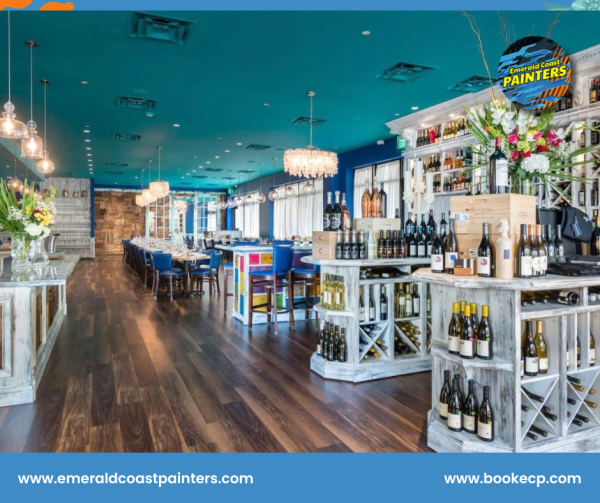Vlog 8
How Restaurant Interior Design Influences Dining Experiences

In the world of gastronomy, where culinary delights are aplenty, one often underappreciated aspect of a dining experience is the restaurant's interior design. Dining out is not just about the food; it's a holistic encounter that engages all our senses. Restaurant interior design plays a pivotal role in creating the ambiance, setting the mood, and enhancing the overall dining experience. In this article, we will delve into the fascinating realm of how restaurant interior design influences the way we savor our meals.
The Power of First Impressions
When you step into a restaurant, the first thing that captures your attention is its ambiance. The interior design sets the tone for your entire dining experience. Whether it's the warm, rustic charm of a cozy Italian eatery or the sleek, modern aesthetics of a high-end sushi bar, the initial impression can significantly impact your expectations and mood.
Studies have shown that customers often make judgments about the quality of food based on the restaurant's appearance. A well-designed interior can convey a sense of professionalism, cleanliness, and attention to detail, instilling confidence in the diner. This positive first impression can lead to higher satisfaction levels even before the food arrives.
Creating an Emotional Connection
Great restaurant interior design goes beyond aesthetics; it creates an emotional connection between the diner and the space. The choice of colors, lighting, and decor can evoke specific feelings and memories. For instance, warm, earthy tones and dim lighting can create a sense of intimacy and romance, making it ideal for a romantic dinner. On the other hand, bright, vibrant colors and playful decor can infuse energy and excitement, perfect for a family-friendly restaurant.
Influencing Behavior and Dwell Time
Interior design can subtly influence customer behavior. Cleverly placed mirrors can make a small space feel more expansive, while comfortable seating encourages patrons to linger and order more. Some restaurants use open kitchen designs, allowing diners to watch the chefs at work, adding an element of entertainment to the experience.
Additionally, the layout and design of seating arrangements can impact social interactions. Tables for two encourage intimacy, while communal dining tables promote a sense of community and shared experiences. By strategically designing the interior, restaurants can cater to different customer preferences and maximize revenue.
Harmonizing with the Menu
A well-thought-out interior design should align with the restaurant's concept and cuisine. It should complement the menu, creating a harmonious fusion of flavors, aesthetics, and experiences. For example, a seafood restaurant may incorporate nautical elements into its decor, enhancing the maritime dining adventure.
The Importance of Lighting
Lighting is a critical element in restaurant interior design. It can set the mood, highlight architectural features, and even influence food presentation. Ambient, task, and accent lighting should work in harmony to create the desired ambiance. Dimmer lighting can create an intimate atmosphere, while brighter lighting may be preferred for a casual lunch spot.
The Role of Sound
Sound is another often overlooked aspect of interior design. The acoustics of a restaurant can greatly affect the dining experience. Excessive noise can be distracting and reduce the overall enjoyment of a meal. On the contrary, carefully designed soundscapes with soft background music or the gentle clinking of glasses can enhance the ambiance and conversation.
Sustainability and Eco-Friendly Design
In today's environmentally conscious world, sustainability is a key consideration in restaurant interior design. Using eco-friendly materials, energy-efficient lighting, and sustainable furniture not only reduces the carbon footprint but also resonates with customers who value responsible dining choices. Such efforts can enhance the restaurant's reputation and attract a niche audience.
Conclusion
In the realm of dining, restaurant interior design is the unsung hero that silently influences our senses and emotions. It shapes our expectations, behaviors, and memories, making it an integral part of the overall dining experience. A well-executed interior design can turn a simple meal into a memorable culinary journey. So, the next time you savor a delicious dish at your favorite restaurant, take a moment to appreciate the artistry